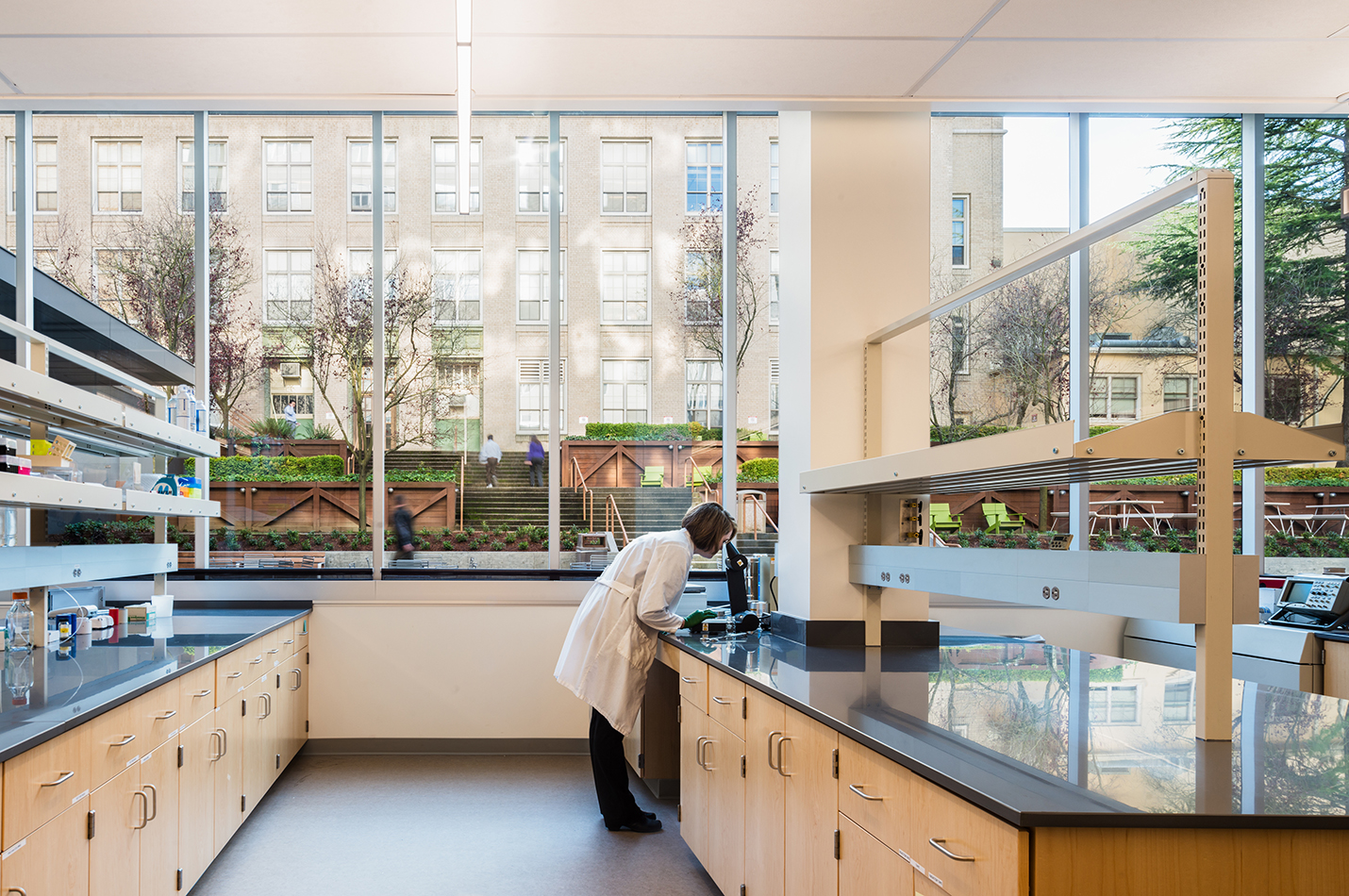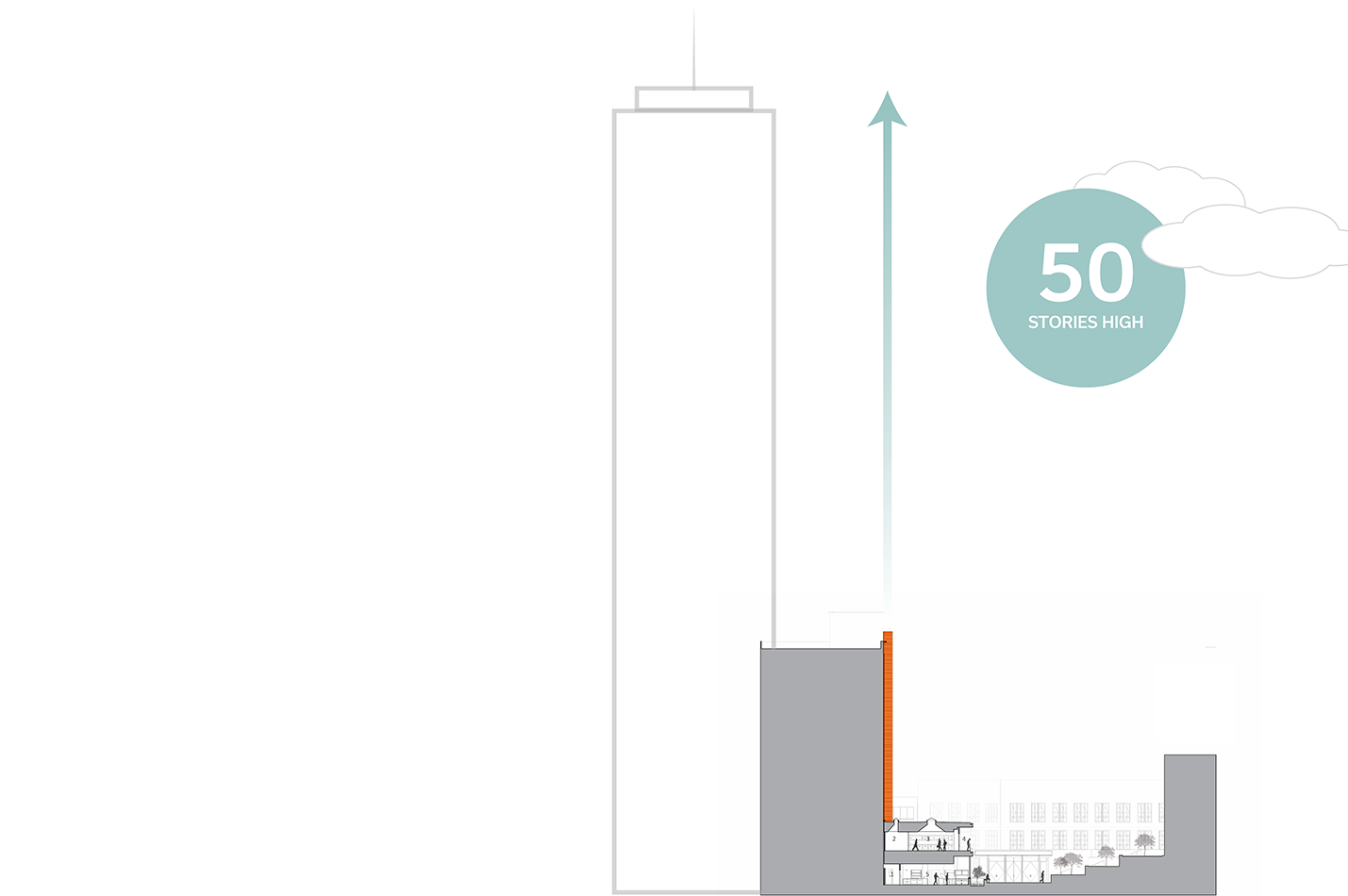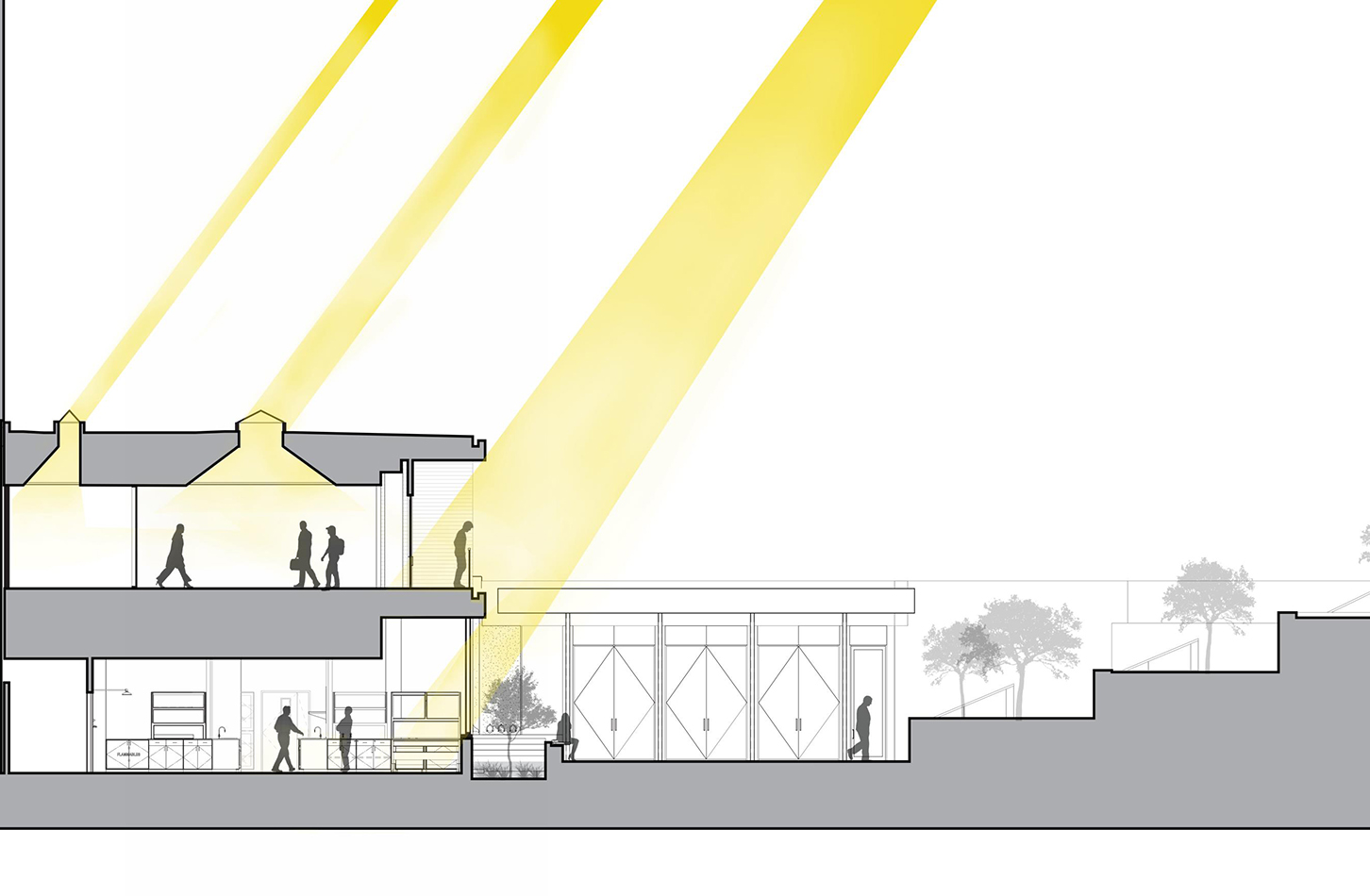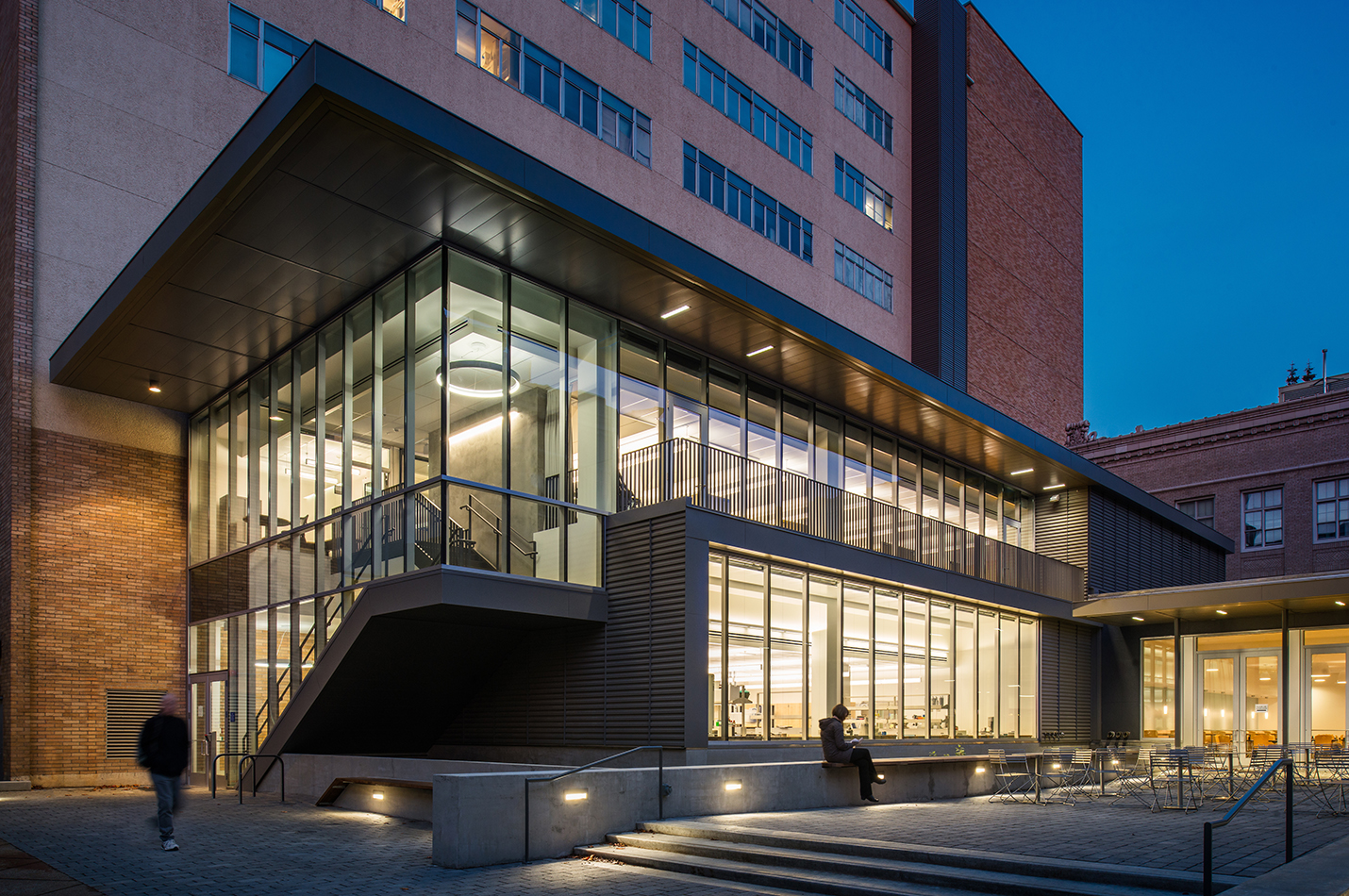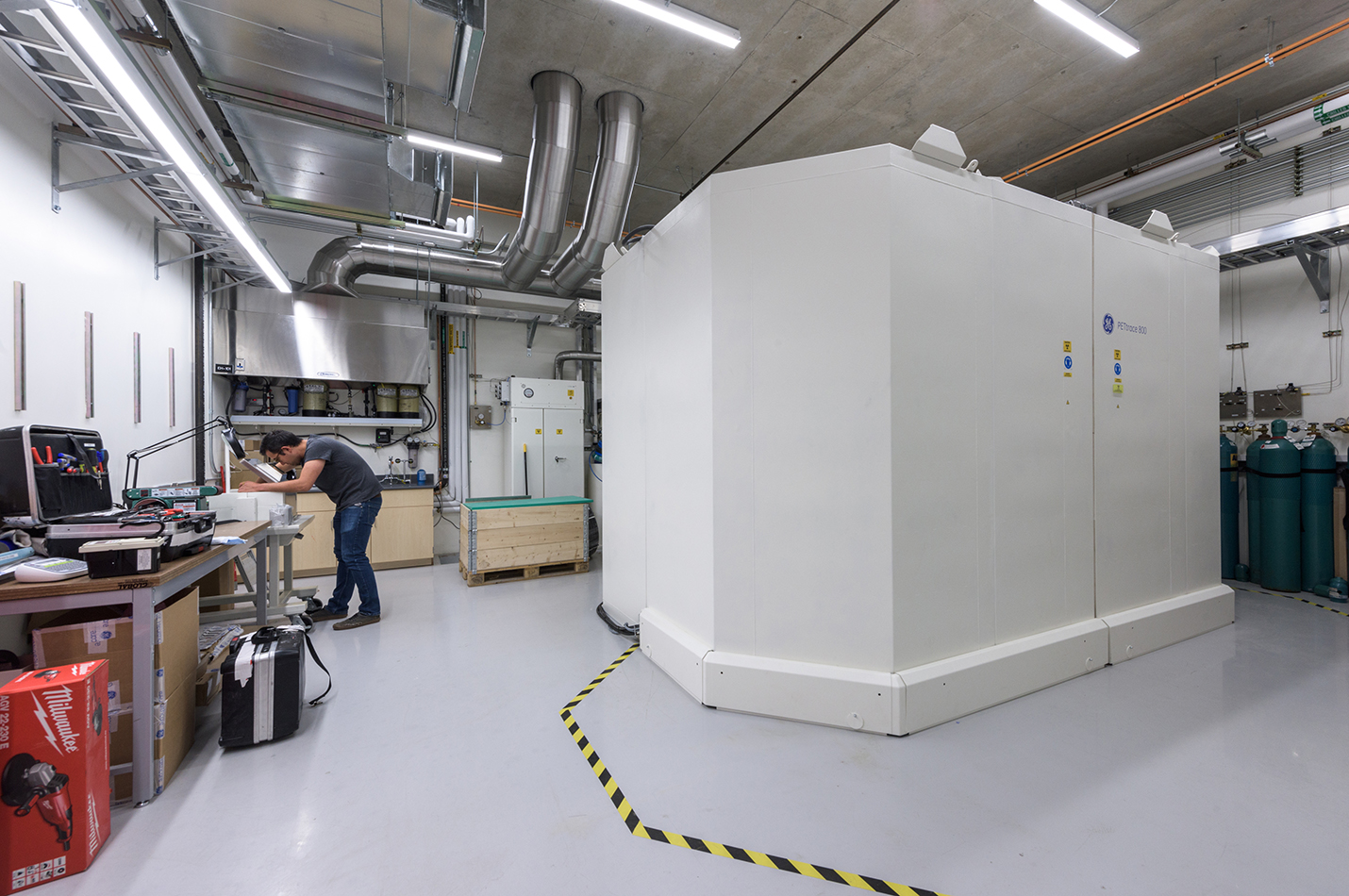Particle Accelerators and Passive Design
PAE Tackles Unique Challenges in a Health Research Laboratory.
Oregon Health & Science University (OHSU) is a teaching hospital, biomedical research facility, and level 1 trauma center located in Portland, OR. The breadth of such a robust institution can create a host of design challenges. Having worked with OHSU for more than two decades on over 500 projects, PAE has learned to approach these challenges much like the healthcare professionals who occupy these buildings - treat each project as a living organism: one with many varying – and sometimes conflicting – needs.
In 2014, PAE was engaged by OHSU and SRG Partnership for a new challenge – add a new state-of-the-art radiochemistry research facility to the campus, next to a patient tower, cafeteria, and a public courtyard.
Campus Challenge
The Center for Radiochemistry Research required a new, 9,600 square-foot facility, designed to accommodate a cyclotron particle accelerator to generate radioisotopes for research and clinical applications, and to support a future PET MRI. The building also houses hot cell clean rooms, a pharmacy, a general chemistry lab, office space, and mechanical space.
Nestled within the heart of the campus, the building’s radioactive exhaust presented the project’s biggest design challenge. The lab’s proximity to public outdoor areas and neighboring buildings meant special shielding and exhaust systems were needed. To meet this challenge, PAE assumed a collaborative approach to design and delivery, and engaged OHSU, SRG Partnership, and the rest of the project team in all parts of the building design process via weekly meetings.
To effectively shield and reroute the exhaust, the building’s ground floor layout was carefully planned to mirror the workflow of the research conducted within. Areas requiring the heaviest radioactive shielding were placed closest to the building core, followed outwardly by clean rooms, and then research laboratory spaces at the building’s outer shell. Additionally, PAE’s mechanical design utilized spring isolated duct work mounted to a neighboring building to vent radioactive and laboratory exhaust approximately 50-stories into the air, forcing dangerous fumes up and away from the rest of the campus.
Creating an Enjoyable Workplace
Healthy and productive workplaces also take priority in PAE’s designs. Offices were elevated to the second level where an array of rooftop skylights and a large south facing window wall generate an airy office environment, full of light. The mechanical room is tucked behind the offices over the cyclotron to minimize disruptive acoustics. On the first floor labs make up the outermost layer of the building and have access to daylight and views.
PAE partnered with the Energy Studies in Buildings Laboratory at the University of Oregon to research daylighting strategies and optimize configuration of shading elements, glazing, roof overhangs and skylights. The goal: provide even and balanced light with minimal glare.
A Case Study in Passive Design
The result is an award-winning, compelling case study for unique design solutions and passive design in a laboratory environment. PAE Senior Associate Nedzib Biberic and SRG Partnership's Senior Associate Bryan Higgins will present on the challenges and design solutions for the radiochemistry lab at the upcoming 2018 I2SL Annual Conference.
Winner of the DJC Top Project, First Place, Public Work, 2017



